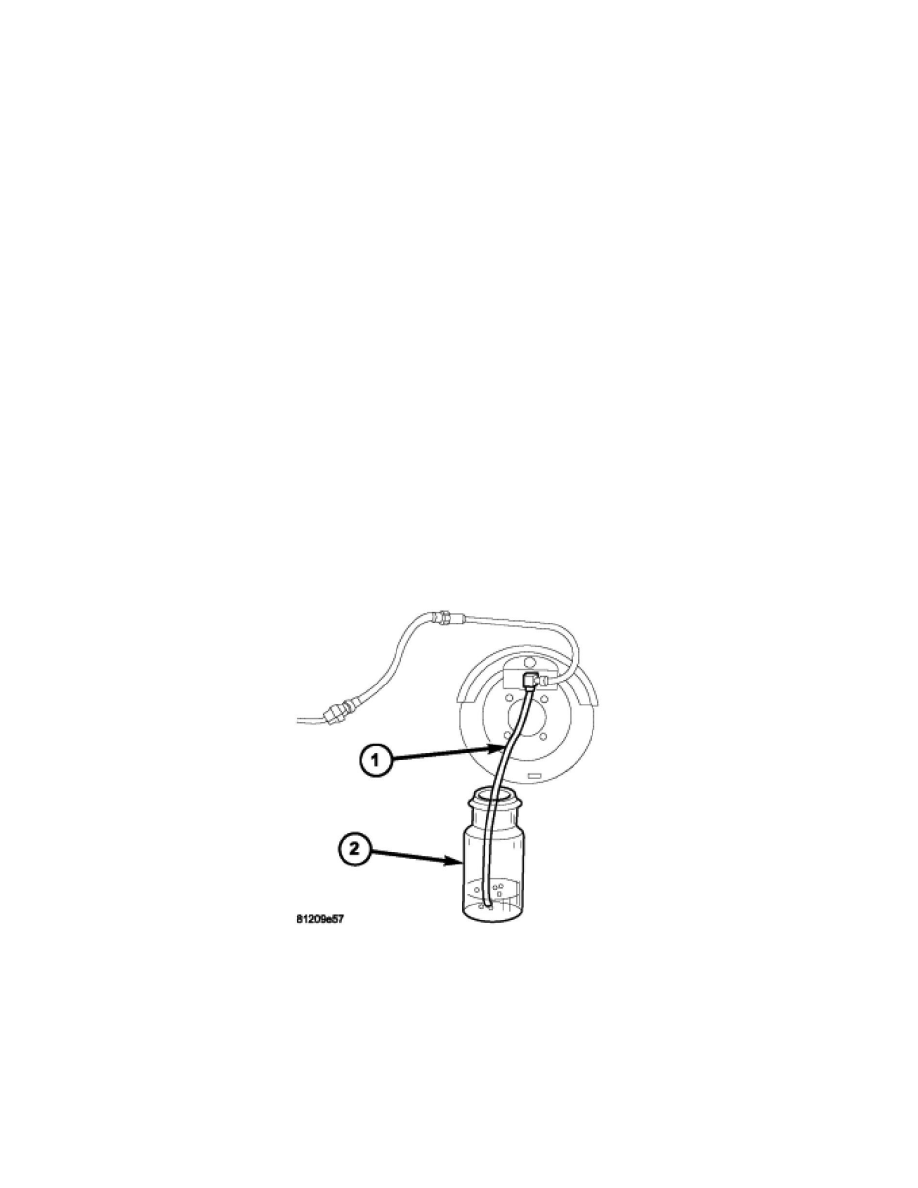Avenger V6-2.7L (2008)

Brake Bleeding: Service and Repair
Base Brake Bleeding
BASE BRAKE BLEEDING
NOTE: For bleeding the ABS hydraulic system, refer to Antilock Brake System Bleeding in the Antilock Brake System section.
CAUTION: Before removing the master cylinder cap, wipe it clean to prevent dirt and other foreign matter from dropping into the master
cylinder reservoir.
CAUTION: Use only Mopar(R) brake fluid or an equivalent from a fresh, tightly sealed container. Brake fluid must conform to DOT 3
specifications.
NOTE: For bleeding of the Antilock Brake System, .
Do not pump the brake pedal at any time while having a bleeder screw open during the bleeding process. This will only increase the amount of air in the
system and make additional bleeding necessary.
Do not allow the master cylinder reservoir to run out of brake fluid while bleeding the system. An empty reservoir will allow additional air into the brake
system. Check the fluid level frequently and add fluid as needed.
The following wheel circuit sequence for bleeding the brake hydraulic system should be used to ensure adequate removal of all trapped air from the
hydraulic system.
-
Left rear wheel
-
Right front wheel
-
Right rear wheel
-
Left front wheel
MANUAL BLEEDING
NOTE: To bleed the brakes manually, the aid of a helper will be required.
1. Attach a clear plastic hose (1) to the bleeder screw and feed the hose into a clear jar (2) containing enough fresh brake fluid to submerge the end of
the hose.
2. Have a helper pump the brake pedal three or four times and hold it in the down position.
3. With the pedal in the down position, open the bleeder screw at least one full turn.
4. Once the brake pedal has dropped, close the bleeder screw. After the bleeder screw is closed, release the brake pedal.
5. Repeat the above steps until all trapped air is removed from that wheel circuit (usually four or five times).
6. Bleed the remaining wheel circuits in the same manner until all air is removed from the brake system. Monitor the fluid level in the master cylinder
reservoir to make sure it does not go dry.
7. Check and adjust brake fluid level to the FULL mark.
8. Check the brake pedal travel. If pedal travel is excessive or has not been improved, some air may still be trapped in the system. Re-bleed the
brakes as necessary.
9. Test drive the vehicle to verify the brakes are operating properly and pedal feel is correct.
